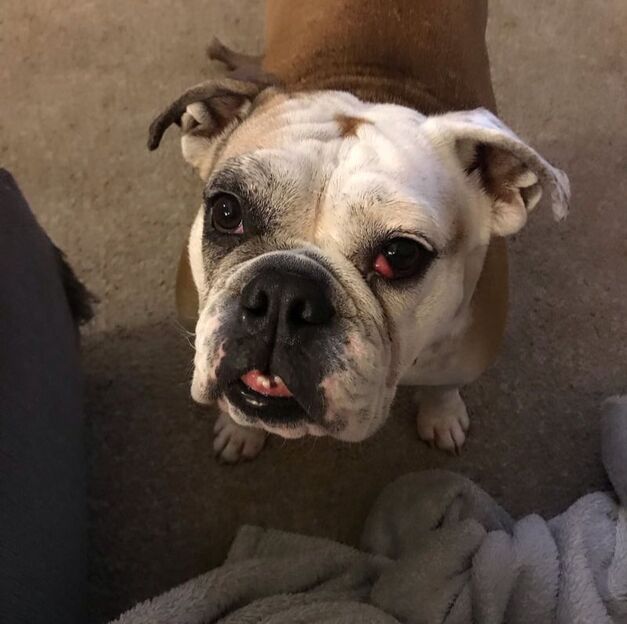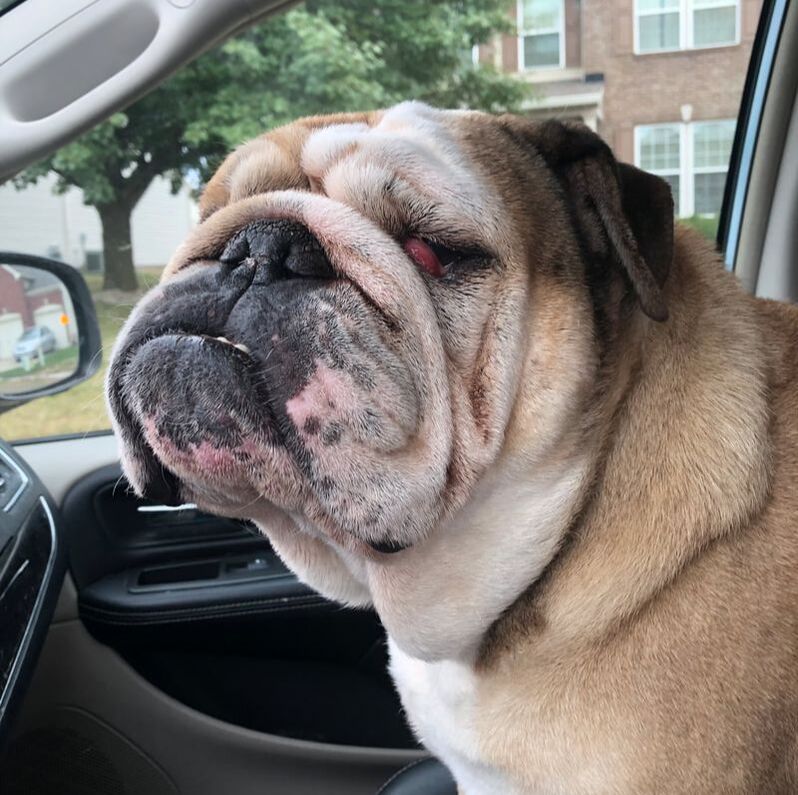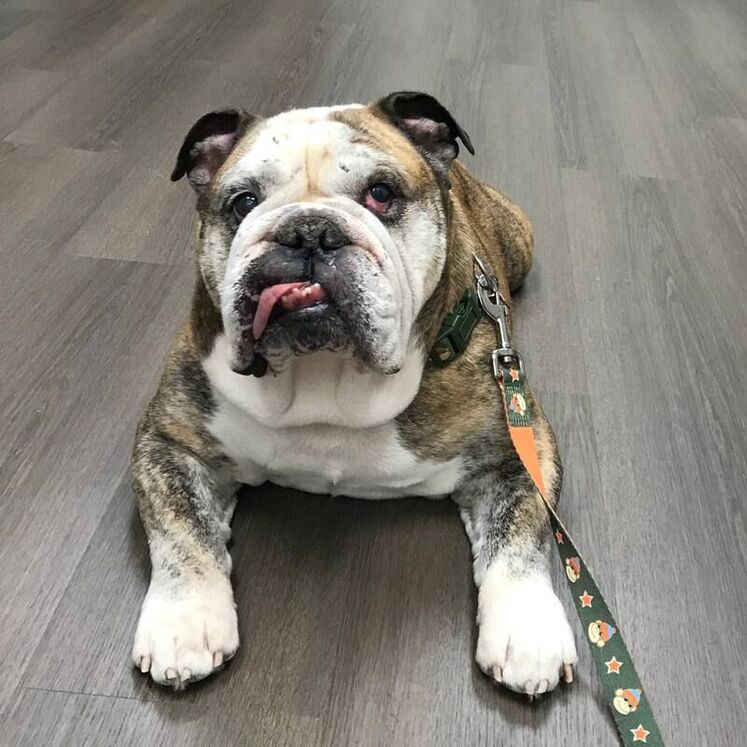Cherry Eye
What is "cherry eye"?
All dogs have a third eyelid located inside the lower eyelid, which serves as an additional layer of protection to the eye. "Cherry eye" is a common terms for the prolapse of the third eyelid gland. The third eyelid contains a special gland that produces a lot of the dog's protective tear film for the eye. So when the gland pops out, people refer to it as cherry eye.
What causes "cherry eye"?
There are several dog breeds where cherry eye is more prevalent, such as bulldogs, Boston Terriers, Bloodhounds, and Beagles. The exact cause is unknown, but it is believed that these particular breeds have a genetic component which may cause a weakening in the fibrous attachment that holds the gland in place.
We see a lot of dogs come into our rescue with cherry eye. While the condition is not life threatening, it can still cause eye issues if left untreated.
What are the signs of "cherry eye"?
Cherry eye will appear as a red or pink swollen mass on the lower eyelid. There are various degrees of cherry eye, so the prolapsed gland can appear large and cover a lot of the eye, or it can be small and only appear once in a while. Below are two examples of bulldogs with cherry eye.
All dogs have a third eyelid located inside the lower eyelid, which serves as an additional layer of protection to the eye. "Cherry eye" is a common terms for the prolapse of the third eyelid gland. The third eyelid contains a special gland that produces a lot of the dog's protective tear film for the eye. So when the gland pops out, people refer to it as cherry eye.
What causes "cherry eye"?
There are several dog breeds where cherry eye is more prevalent, such as bulldogs, Boston Terriers, Bloodhounds, and Beagles. The exact cause is unknown, but it is believed that these particular breeds have a genetic component which may cause a weakening in the fibrous attachment that holds the gland in place.
We see a lot of dogs come into our rescue with cherry eye. While the condition is not life threatening, it can still cause eye issues if left untreated.
What are the signs of "cherry eye"?
Cherry eye will appear as a red or pink swollen mass on the lower eyelid. There are various degrees of cherry eye, so the prolapsed gland can appear large and cover a lot of the eye, or it can be small and only appear once in a while. Below are two examples of bulldogs with cherry eye.
How is cherry eye treated?
Sometimes the prolapsed tear duct will go back in position. However, if this does not happen immediately, then it must be treated with surgery. It is important to get this fixed sooner than later as the prolapsed gland can get infected or injured. Your dog could also develop dry eye if the condition is left untreated which can also lead to vision problems, including ulcers.
There are two surgical methods used to treat the cherry eye. One method is to suture the gland in place, or "tack" the gland to the orbital rim. The second method is known as the "pocket technique," where a new pocket is created for the gland to be tucked. The most important part of both methods is to retain the tear gland.
The gland usually returns to normal function within a few weeks after surgery. You may see some inflammation in the eye for about a week after surgery. Your vet may suggest performing an ocular exam annually after a dog has cherry eye surgery as some dogs may have a relapse and need the surgery performed again. Other dogs who have had surgery may not have a relapse, but could develop dry eye as they age.
We only remove the tear duct if a tacking procedure was unsuccessful. Removal of the tear duct should not be the first option.
Sometimes the prolapsed tear duct will go back in position. However, if this does not happen immediately, then it must be treated with surgery. It is important to get this fixed sooner than later as the prolapsed gland can get infected or injured. Your dog could also develop dry eye if the condition is left untreated which can also lead to vision problems, including ulcers.
There are two surgical methods used to treat the cherry eye. One method is to suture the gland in place, or "tack" the gland to the orbital rim. The second method is known as the "pocket technique," where a new pocket is created for the gland to be tucked. The most important part of both methods is to retain the tear gland.
The gland usually returns to normal function within a few weeks after surgery. You may see some inflammation in the eye for about a week after surgery. Your vet may suggest performing an ocular exam annually after a dog has cherry eye surgery as some dogs may have a relapse and need the surgery performed again. Other dogs who have had surgery may not have a relapse, but could develop dry eye as they age.
We only remove the tear duct if a tacking procedure was unsuccessful. Removal of the tear duct should not be the first option.




